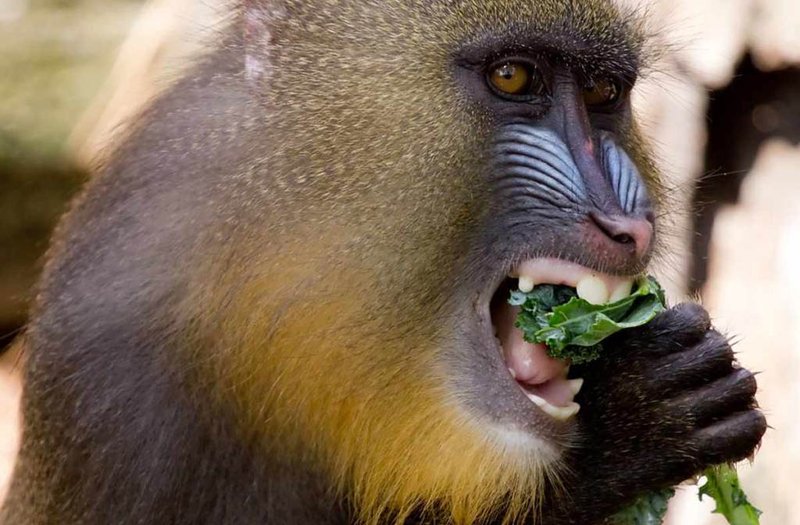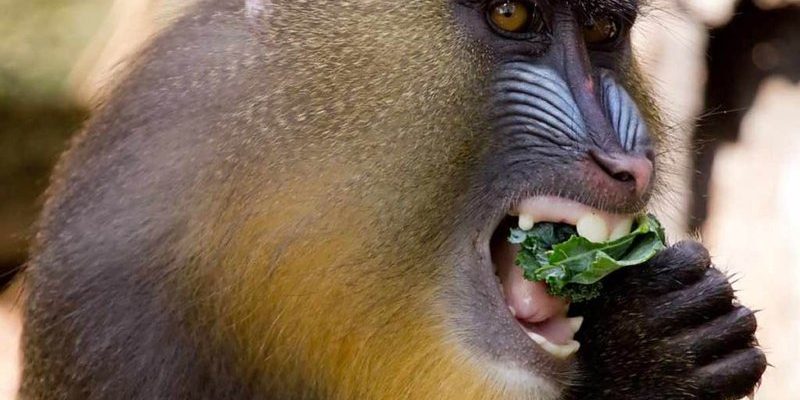
Living in the dense forests of Central Africa, mandrills rely on their keen senses and social structure to hunt and gather. As you sip your coffee, imagine the mandrill’s world: rich in textures, sounds, and the constant quest for nourishment. Let’s dive deeper into the intriguing diet and hunting techniques of these remarkable animals.
What Do Mandrills Eat?
When it comes to diet, mandrills are omnivores, which means they dine on a mix of fruits, plants, and small animals. Think of them as the culinary adventurers of the primate world. Their diet mainly consists of:
- Fruits: Mandrills enjoy a variety of fruits, including bananas, berries, and figs. These sweet treats provide them with vital energy.
- Vegetation: They munch on leaves, seeds, and roots. This plant-based part of their diet supports their digestive health.
- Small animals: Occasionally, mandrills will hunt insects, small rodents, and even birds. This protein source is essential, especially during leaner times.
You might be wondering how they find this food. Mandrills are known for their excellent sense of smell, which helps them sniff out ripe fruits and potential prey. Their social structure also plays a role, as they often forage in groups, sharing knowledge about where food sources are plentiful.
How Do Mandrills Hunt?
While mandrills don’t typically hunt big game like lions or cheetahs, they have their own strategies for catching smaller prey. It’s not just about brute force; mandrills use their brains too. Here’s how they approach hunting:
- Teamwork: Mandrills often hunt in groups. Working together allows them to flush out insects or small animals, making it easier to catch dinner.
- Sneaky tactics: These clever creatures use stealth to approach their prey. They can move quietly through the underbrush, taking advantage of their surroundings.
- Quick reflexes: When they spot potential food, their agility and speed come into play. Mandrills can leap from branch to branch or dart through the trees at impressive speeds.
Let’s say a mandrill spots a tasty insect under a leaf. Instead of charging straight in, it might crouch low, inching closer to avoid detection. This kind of calculated approach shows how intelligence plays a significant role in their hunting success.
The Role of Social Structure in Foraging
You can think of mandrills as living in a close-knit community, much like a family. Their social structure is crucial when it comes to foraging for food. Here’s why:
- Learning from each other: Younger mandrills often watch older ones to learn where to find food. This passed-down knowledge is key in the wild.
- Protective behavior: When foraging in groups, mandrills can keep an eye out for predators. This increases safety while they search for food.
- Sharing resources: If one mandrill finds a good food source, it may call others over to share. This communal approach strengthens bonds within the group.
By working together and learning from one another, mandrills enhance their chances of finding food. It’s a blend of cooperation and strategy that highlights the importance of social dynamics in nature.
Seasonal Changes and Diet Variation
Mandrills’ diets can change with the seasons, much like how our cravings shift from summer salads to cozy winter stews. In periods of abundant fruit, they might feast heavily on these sources. However, during drier seasons, they adapt and turn to more robust vegetation or hunt small animals.
A significant part of their diet is influenced by *environmental factors.* For example, if fruit trees blossom at different times, mandrills must be flexible and ready to shift their eating habits. This adaptability helps them survive in varying conditions.
Conservation and the Future of Mandrills
Unfortunately, mandrills face threats from habitat destruction and hunting. As human activities encroach on their living spaces, their access to food becomes compromised. Conserving their habitats is essential for ensuring that mandrills can continue to thrive.
Efforts to protect mandrill populations include establishing national parks and reserves. These safe havens allow them to forage freely without the pressures of human interference. Raising awareness about these unique primates can also encourage conservation efforts, securing a future for the mandrill’s intricate ecosystem.
The diet and hunting strategies of the mandrill are a beautiful blend of nature’s artistry and survival instinct. From their vibrant social structures to their impressive hunting techniques, these creatures are more than just their stunning appearances. They remind us of the delicate balance of ecosystems and the importance of preserving our natural world.
By understanding how mandrills live and thrive, we can appreciate their role in the ecological puzzle. As we sip our coffee and think of the world they navigate, let’s commit to learning more about these intriguing animals and advocating for their protection.

